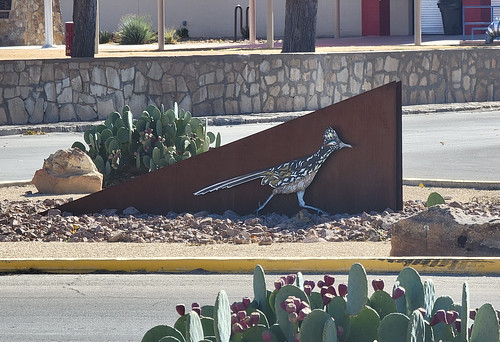A confession: I’ve had a series of roadrunner posts rattling around in my head for a year and a half or so. Did I acually write them? We all know the answer. Just now I was about to post some pix to Instagram and realized that I had a post’s worth of captioning, so here goes. Not what I’d planned as the 1st roadrunner post, but perhaps this will break the logjam.
The Word of the Day is zygodactyl. Most bird feet are three toes in front, 1 in back; they’re anisodactyl. A few, including many woodpeckers, owls, parrots and cuckoos, have two in front and two behind: they’re zygodactyl.
This is a left foot I salvaged from a roadkill roadrunner yesterday (not to worry, legal eagles, I disposed of it after taking a couple pix). The X – and thus the very distinctive roadrunner track – is obvious.
After looking at the foot for a bit, I had a question. Does the same toe rotate back in all zygodactyl birds? Is there zygodactyl chirality?? Turns out the answer is yes, same toe always. BECAUSE THERE’S A DIFFERENT WORD IF THE OTHER TOE GOES BACK!
In the above diagram (yanked from this Wikipedia page) we’re looking at right feet, 4 is the outer front toe in anisodactyl birds and 2 is the inner toe. From that same Wikiped page, “heterodactyl arrangement only exists in trogons.”
New goal: see a zygodactyl bird (roadrunner) and a heterodactyl bird (elegant trogon) in the same area. If there are still a couple trogons hanging around far southern Arizona this January (there were last year), it might be possible after Christmas.



